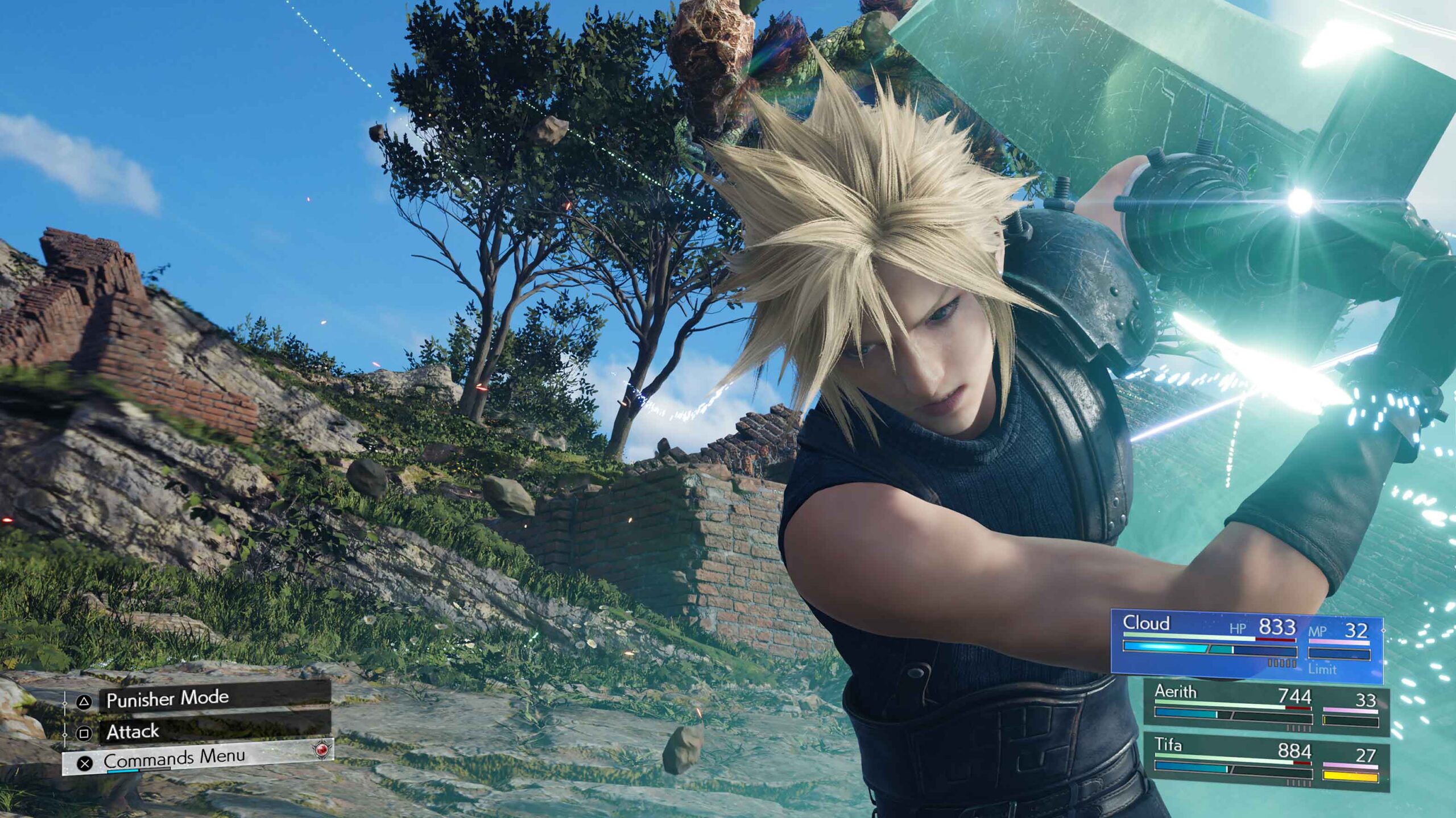
There are few moments in video games as ingrained into my brain as leaving Midgar for the first time in Final Fantasy VII.
As a kid in a far less internet-heavy time, I hadn’t really seen advertising for the 1997 PlayStation classic, and, therefore, wasn’t expecting to actually leave the towering cyberpunk city, so richly atmospheric and textured as it was, after the first five hours. To discover the vast 3D world of Gaia outside Midgar’s oppressive walls absolutely blew my mind; it was such a far cry from the sprite-based RPGs I’d seen and played before. Sure, by modern accounts, Gaia is a plain and quaint open world, but at the time, given the hardware? It was an impressive technical marvel that, when coupled with the achingly beautiful Nobuo Uematsu-composed main theme, provided dozens of hours of enthralled exploration for this shy homebody. Simply put, it was magical.
As I played Final Fantasy VII Rebirth for the first time at a recent preview event, those same feelings of wonder started to return to me. Given my profound love for both the original Final Fantasy VII and Final Fantasy VII Remake, I was certainly expecting to enjoy my time with Square Enix’s second installment of this VII remake trilogy, but during the demo, I was surprised to find how much depth and nuance it held, even in one hour of playtime, and my excitement is somehow even higher than before.
Experiencing Gaia like never before
That all starts with the world itself. With the power of the PS5, Square Enix can render Gaia with a stunning level of photorealism and detail that just wasn’t possible over 25 years ago. Across a couple of Rebirth gameplay trailers this year, we’ve seen the new Gaia in action, featuring everything from the sprawling, luscious fields found outside Midgar to the enormous gorges and shimmer riverbeds that house Cosmo Canyon, as well as the multiple means of transportation — including Chocobo birds and a buggy — with which you’ll traverse them. That’s to say nothing of what we haven’t yet seen, like the frigid Northern region that’s home to the Forgotten Capital (the climactic part of the original VII‘s first disc which will serve as the endpoint for Rebirth), or the individual areas of the massive, minigame-filled Gold Saucer amusement park.
For the purposes of my demo, though, I was confined to a comparatively smaller, walled-off part from earlier in the game. Here, the party has just exited the Mythril Mine and approaches Junon, a harbour town occupied by the ruthless Shinra Electric Power Company, in hopes of seeking passage to another part of Gaia to pursue Sephiroth. But even in this purposefully contained section, I felt liberated. Free from the relative linearity of FFVII Remake, which was in itself effective in showing the claustrophobic iron fist of Shinra, I felt that sense of promise that leaving the original VII‘s Midgar gave me.

While there was a main quest marker beckoning me to Junon, I felt encouraged to go off and explore. After Cloud and friends descended a hill on the back of Chocobos, lamenting what Shinra had done to the area, I got to see firsthand what they were talking about. The once beautiful countryside was now littered with brownish, wilting grass, overturned by Shinra machinery and signage. Now, the only signs of life are the desecrated homes of a small, abandoned village and the mobs of goblins and large winged beasts that surround them.
Given that this is an early part of the game, it’s a clever means of environmental storytelling, showing how, despite the initial beauty seen immediately outside of Midgar, Shinra’s tyrannical reach extends much farther. Looking at other nearby parts of the Junon map that will be accessible in the final game, including one that contains a cruise ship and another that houses the bustling lower-class undercity with the high-tech, luxurious Highwind airship above it, only got me more excited for what I’ll eventually discover. That level of scale is something Rebirth can create that the original game, in which Cloud in the overworld was ostensibly the same size as towns and landmarks, never could.
But it’s not enough to be pretty and big; you have to fill these areas with meaningful content, and so far, I like what I’m seeing. Besides the promise of optional moment-to-moment banter between the party — something Remake did so well — there was an impressive amount of side activities even in this smaller-scale demo area. Quickly, I discovered a little Chocobo chick that led me to a bus stop, where I could lift a fallen sign to unlock it as a fast travel point. This nifty little Ghost of Tsushima-esque ‘follow-the-animal’ approach to discovering points of interest feels refreshing in an open-world format, especially when the critter in question is so darned cute. And yes, Cloud can pet him! (This, coupled with the little munchkin having a nap beside you when you rest here to replenish HP and MP, just melted my heart.)
Outside of a few of these bus stops around the map, you can come across a Chocobo Ranch featuring several NPCs to talk to for more worldbuilding and, more crucially, the ability to customize the look of your mount. The options here are admittedly somewhat limited, but I’m sure the final game will offer a larger variety. For now, I just appreciate that riding an adult Chocobo lets you sniff out hidden treasure in a Final Fantasy IX-style ‘Hot and Cold’ minigame. And if nothing else, coming across this lively stable and the fully-grown Chocobo, in addition to the baby birds in the fields outside, served as an effective reminder of all the small yet beautiful things in Gaia that are threatened by Shinra, adding further weight to my journey.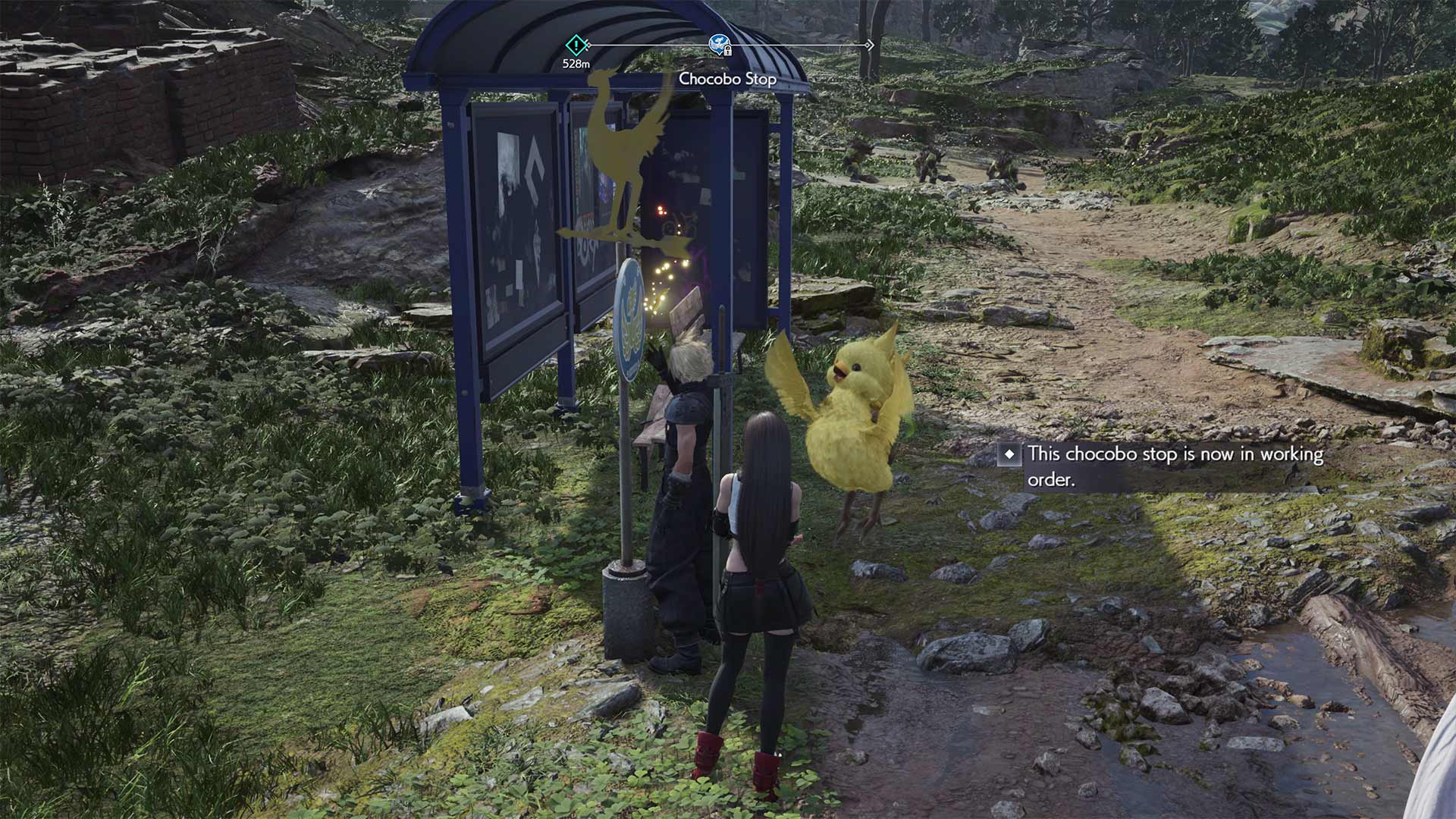 I was also impressed by how much the game rewarded you for going off the beaten path, even in this downsized space, and not just for Chocobo treasure. In particular, I spotted a tiny island with a boat’s mast sticking out of it just off the coast below. To my utter delight, not only could I hop down the cliffside to that little beach, but I could swim all the way out, with or without the Chocobos, to the minuscule landmass and find a litany of goodies on it. The idea of swimming at all in Final Fantasy VII is something I never expected, and the fact that I could do so for exploration — especially to places I thought were just part of the background — suggests so many other opportunities like this in Rebirth‘s larger open world. This also just let me enjoy each character’s uniquely charming swimming animations; take Cloud, who naturally paddles like he’s hating every moment of it, versus Red XIII, who hilariously bobs up and down like a flailing fish.
I was also impressed by how much the game rewarded you for going off the beaten path, even in this downsized space, and not just for Chocobo treasure. In particular, I spotted a tiny island with a boat’s mast sticking out of it just off the coast below. To my utter delight, not only could I hop down the cliffside to that little beach, but I could swim all the way out, with or without the Chocobos, to the minuscule landmass and find a litany of goodies on it. The idea of swimming at all in Final Fantasy VII is something I never expected, and the fact that I could do so for exploration — especially to places I thought were just part of the background — suggests so many other opportunities like this in Rebirth‘s larger open world. This also just let me enjoy each character’s uniquely charming swimming animations; take Cloud, who naturally paddles like he’s hating every moment of it, versus Red XIII, who hilariously bobs up and down like a flailing fish.
Meanwhile, you can take on a number of monster hunts, which offer their own level of challenge through various optional objectives, like completing them within a given window of time, as well as rewards. Some of those winnings go towards a new crafting system for items like potions — I’m not sure FFVII needed what often feels like an obligatory addition to modern games, but I only got to use it once, so I’m hopeful it’ll feel robust and well-implemented in the finished product. On the flip side, the in-game device that Cloud uses will provide a bio on each beast to further flesh out the world, which was a nice touch.
“It remains to be seen how everything will come together in the end, but I can’t wait to experience it.”
But the real highlight of these fights was to showcase Rebirth‘s new combat features. Admittedly, it plays largely the same as Remake so far, but considering that the 2020 game had such a magnificent battle system that mixed real-time combat with the ability to slow time to strategically issue commands to all party members, that’s exactly what I wanted. Given how many hours I’ve spent playing (and replaying) Remake, I immediately appreciated what Rebirth‘s changes bring to the table.
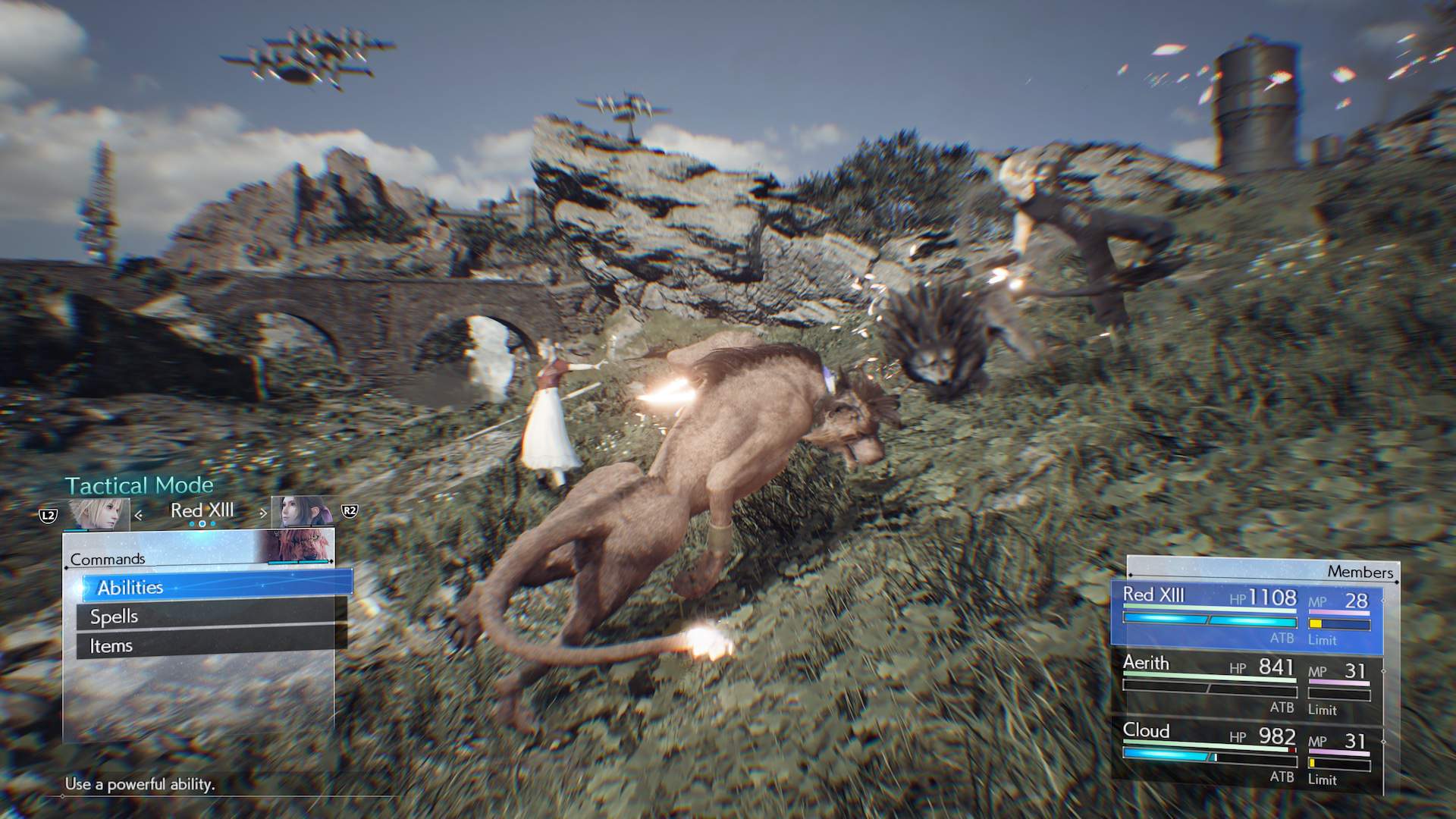 First, there’s the addition of Red XIII, the talking cat-like creature who joined the party late in Remake as a non-playable guest member. Now, you have full control of him, and I loved how different he felt from the rest of the (all-human) cast. For one, Red XIII being a four-legged animal means he has far more speed and maneuverability, and I enjoyed simply bounding around and unleashing quick scratches and bites like a ferocious lion. On top of that, his unique skill (the move tied to the Triangle button) lets him fill up a metre and execute a rage mode of sorts that provides speed and attack buffs while letting him siphon enemy HP. When paired with abilities like Sentinel Stance (a powerful guard that prepares a strong counterattack), Red XIII almost plays like a delightfully fast tank.
First, there’s the addition of Red XIII, the talking cat-like creature who joined the party late in Remake as a non-playable guest member. Now, you have full control of him, and I loved how different he felt from the rest of the (all-human) cast. For one, Red XIII being a four-legged animal means he has far more speed and maneuverability, and I enjoyed simply bounding around and unleashing quick scratches and bites like a ferocious lion. On top of that, his unique skill (the move tied to the Triangle button) lets him fill up a metre and execute a rage mode of sorts that provides speed and attack buffs while letting him siphon enemy HP. When paired with abilities like Sentinel Stance (a powerful guard that prepares a strong counterattack), Red XIII almost plays like a delightfully fast tank.
But I didn’t spend too much time in any one fight with Red XIII because of Rebirth‘s other, more impactful addition: the Synergy Attacks. Building off from Remake‘s Intermission add-on, Rebirth encourages greater collaboration between party members with unique Chrono Trigger-style team-up attacks. The flashiness and versatility of these combo moves are staggering; Barret hurls Red XIII toward an enemy, X-Men “Fastball Special” style in ‘Overfang’ and mixes up explosive gunfire with Cloud’s frenetic swordplay in ‘Partners in Pain,’ while ‘Bodyguard’ lets Cloud defend Aerith from incoming damage as she focuses on ranged attacks and healing.
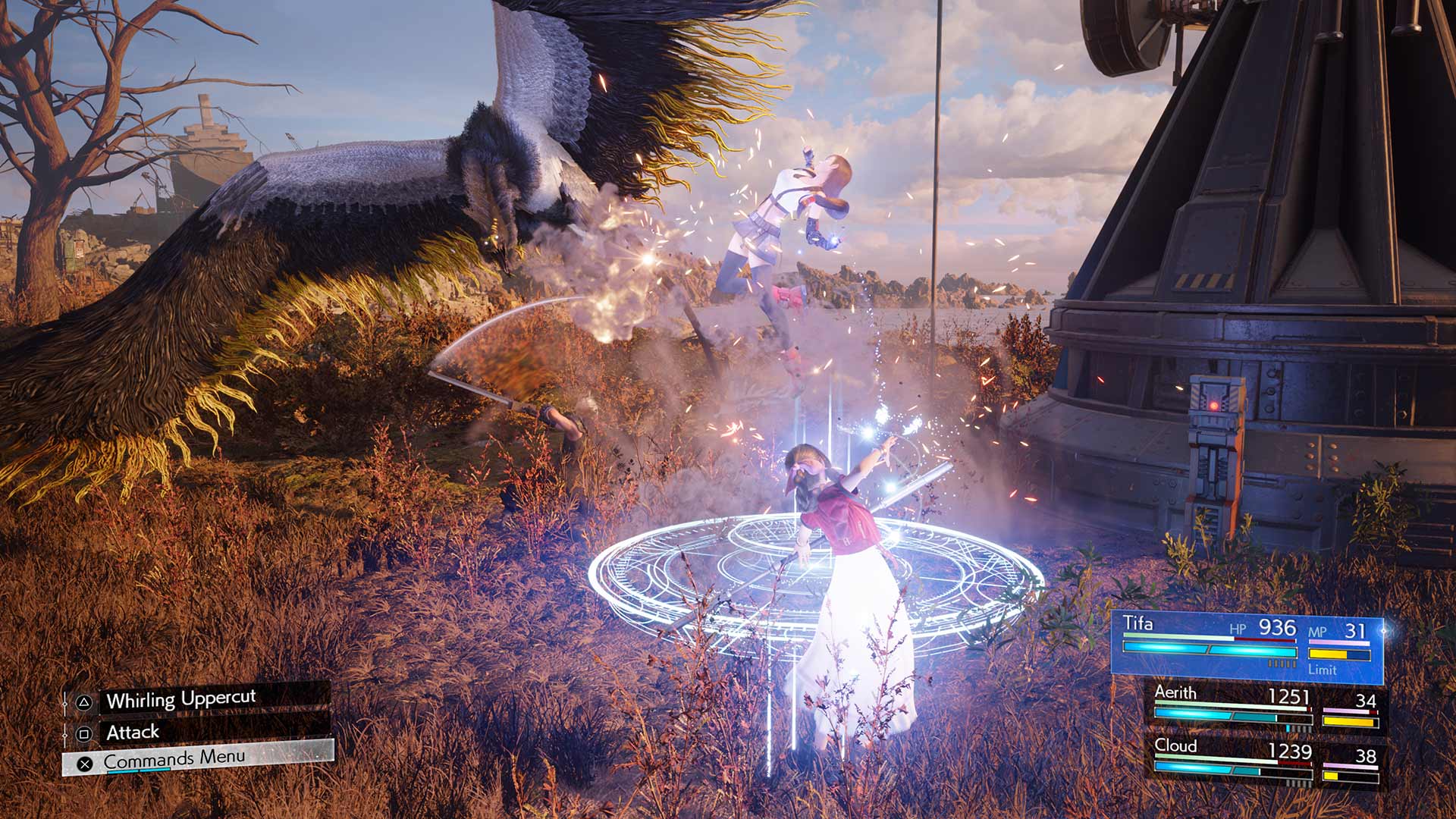 Instead of expending MP, though, these cost their own bars that are filled by using standard Active Time Battle (ATB) abilities. Further, each character has their own Synergy metre, which means you have to constantly switch between party members to build up their respective gauges. I appreciated how this made me much more conscious of my party configurations (of which there were three pre-sets for this demo) and my ability to juggle between each character within them. It forces you to not rely on using one character and makes combat even more dynamic, and I can’t wait to experiment with new party members Yuffie (the ninja warrior introduced in Intermission) and Cait Sith (the little fairy cat creature that rides atop a big Moogle).
Instead of expending MP, though, these cost their own bars that are filled by using standard Active Time Battle (ATB) abilities. Further, each character has their own Synergy metre, which means you have to constantly switch between party members to build up their respective gauges. I appreciated how this made me much more conscious of my party configurations (of which there were three pre-sets for this demo) and my ability to juggle between each character within them. It forces you to not rely on using one character and makes combat even more dynamic, and I can’t wait to experiment with new party members Yuffie (the ninja warrior introduced in Intermission) and Cait Sith (the little fairy cat creature that rides atop a big Moogle).
A deeper and more intriguing story
While most of my preview was spent in Junon, a second, shorter demo was more story-driven, set during the earlier Kalm flashback in which Cloud unpacks his complicated history with Sephiroth. Those who have played the original VII know that Cloud’s recollection of these events isn’t exactly accurate, to say the least, so it was neat to see the little ways that they emphasized this through the young warrior’s mannerisms. (If you know, you know.) But even with that Rashomon element at play here, what’s important is what these scenes mean to Cloud, and in that regard, they’re far more effective than the original game at conveying how much he idolizes Sephiroth, especially thanks to actor Cody Christian’s solid performance that emphasizes our hero’s youth and optimism here.
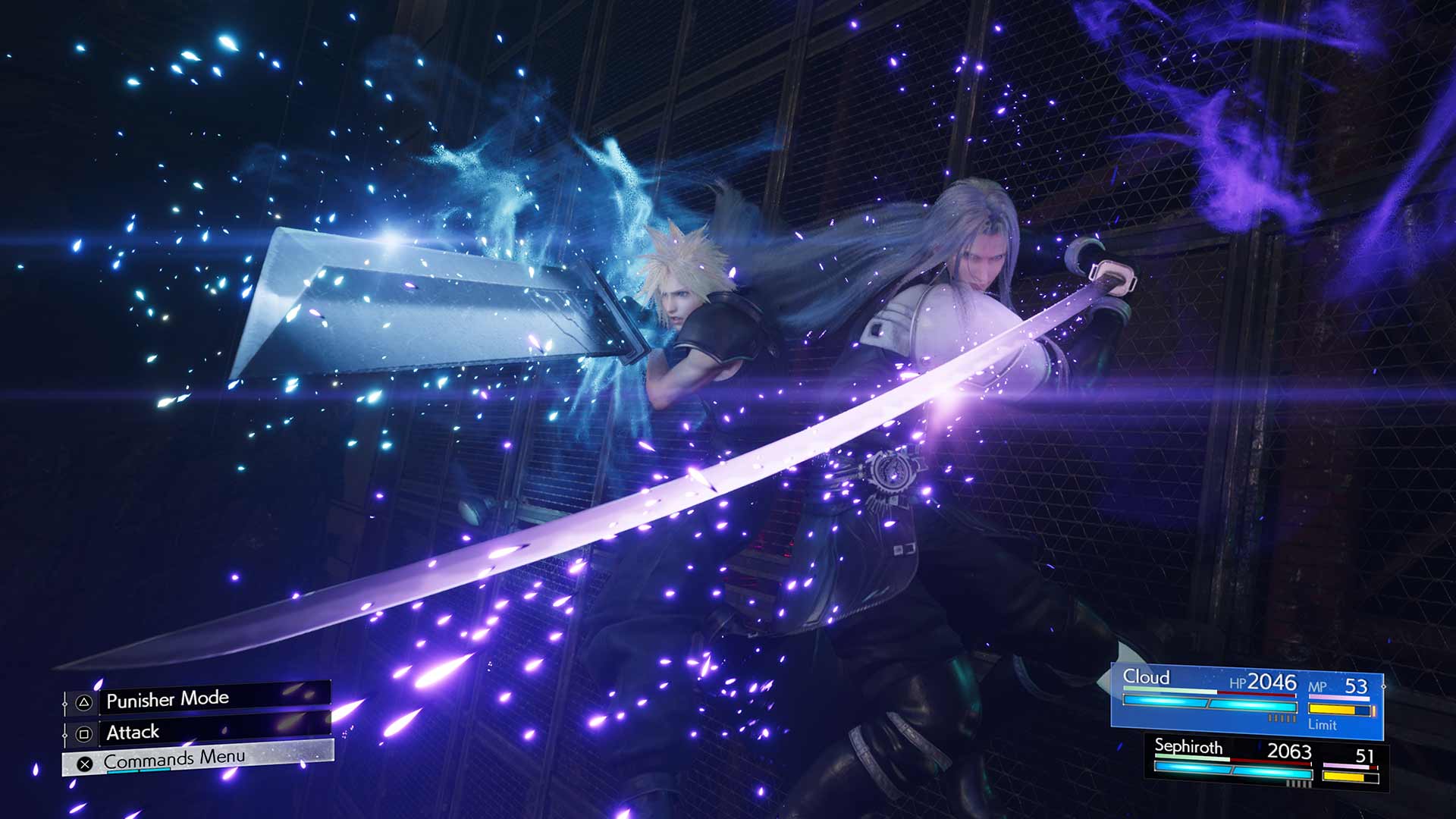 Getting to play as Sephiroth, who in this part of the original VII was handled by the CPU, is also a much more engaging way to illustrate his power. With his flurry of fast sword attacks and long-ranged warp in place of a dodge, he’s a blast to control, even in this brief time. Seeing Sephiroth team up with Cloud — replete with hasty assists and warm words of encouragement — also helps better show how much the legendary SOLDIER’s heroic downfall affected Cloud.
Getting to play as Sephiroth, who in this part of the original VII was handled by the CPU, is also a much more engaging way to illustrate his power. With his flurry of fast sword attacks and long-ranged warp in place of a dodge, he’s a blast to control, even in this brief time. Seeing Sephiroth team up with Cloud — replete with hasty assists and warm words of encouragement — also helps better show how much the legendary SOLDIER’s heroic downfall affected Cloud.
There’s not much else to say there, given the brevity of this section. But the expansion of these story moments, alongside all of the successful new material added in Remake, has me optimistic that Rebirth will deliver on the narrative front. While the last game rather controversially had a different ending for the Midgar portion that teased major future plot deviations, Rebirth‘s moment-to-moment storytelling, from character interactions in and out of battle to what’s found in the world of Gaia itself, continues to exhibit so much love and care for VII as a whole from this Remake saga.
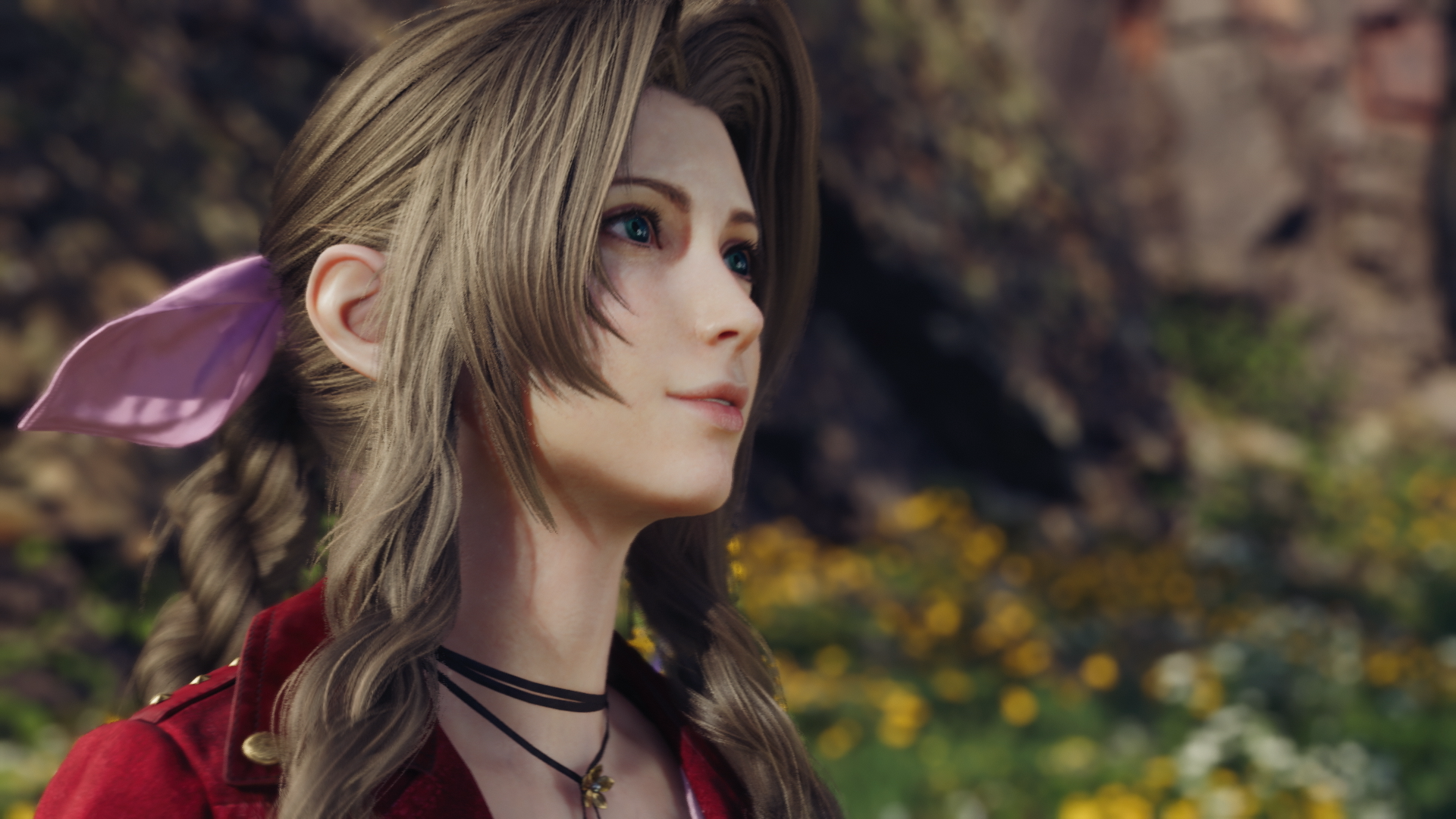 I’ve also always been of the mindset that if you’re going to remake a game, you should take bold swings. The original VII is accessible on all modern platforms, so let Square Enix do something different with this reimagining. A key example of that is the major mysterious role of Zack Fair, a character who was, at this point, dead in the original game. Then there’s the whole Aerith of it all, a character whose fate remains in question. Knowing that we have dozens of extra hours in Rebirth for Square Enix and the character’s lovely voice actress, Briana White, to endear us to her means that whatever happens with her at this game’s conclusion may very well have even more weight than it did in 1997.
I’ve also always been of the mindset that if you’re going to remake a game, you should take bold swings. The original VII is accessible on all modern platforms, so let Square Enix do something different with this reimagining. A key example of that is the major mysterious role of Zack Fair, a character who was, at this point, dead in the original game. Then there’s the whole Aerith of it all, a character whose fate remains in question. Knowing that we have dozens of extra hours in Rebirth for Square Enix and the character’s lovely voice actress, Briana White, to endear us to her means that whatever happens with her at this game’s conclusion may very well have even more weight than it did in 1997.
It remains to be seen how everything will come together in the end, but I can’t wait to experience it.
Final Fantasy VII Rebirth will launch exclusively on PlayStation 5 on February 29th, 2024.
Image credit: Square Enix
MobileSyrup may earn a commission from purchases made via our links, which helps fund the journalism we provide free on our website. These links do not influence our editorial content. Support us here.




